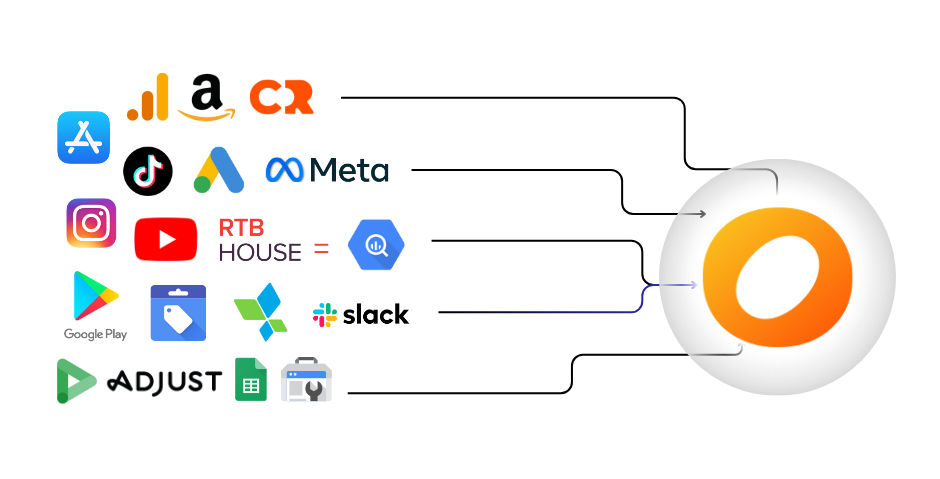
In the fiercely competitive world of fashion advertising, crafting compelling creatives is just half the battle. Understanding what truly drives performance is the key to unlocking the full potential of your campaigns.

Here’s why analyzing the impact of specific elements in your creatives is crucial:
- Tailored Strategies: Different audiences respond to different visuals and messaging. Imagine an ad campaign targeting young adults promoting a new line of sneakers. A vibrant image featuring a trendy model paired with playful, energetic ad copy (“Step Up Your Street Style”) might outperform a more classic, minimalist approach. Understanding these nuances allows you to tailor your creatives and messaging to resonate with specific demographics and achieve your desired objectives.
- Actionable Insights: Not all colors are created equal! A summer dress campaign might see sky blue perform exceptionally well, while a winter coat campaign thrives with deep navy visuals. By analyzing which colors and product categories resonate best with your audience, you gain actionable insights for optimizing future campaigns. Additionally, analyzing the emotional tone conveyed by the visuals can provide valuable insights. A cheerful, playful image might drive brand awareness, while a more sophisticated visual paired with authoritative text (“The Investment Piece You Need”) could encourage higher-end purchases.
- Data-Driven Optimization: Gone are the days of relying solely on gut instinct. Data empowers you to make informed decisions. Understanding how specific elements in your creatives impact performance allows you to A/B test different variations and continuously refine your approach for maximum impact.
How Different Elements Impact Performance:
The performance of your fashion ad creatives can be influenced by a variety of factors, including:
- Color Psychology: Colors evoke emotions and influence purchasing decisions. Understanding color psychology allows you to leverage specific color palettes to achieve desired results. For example, a luxury watch brand aiming for a sophisticated feel might utilize black and silver tones, while a playful beachwear brand might lean towards vibrant pinks and oranges.
- Product Category: The type of product featured in your ad plays a significant role. A casual t-shirt ad might benefit from a more relaxed, lifestyle-oriented image with a relatable caption (“Weekend Vibes”), whereas a formal dress needs a more elegant approach paired with text highlighting its features (“Effortless Elegance for Every Occasion”). Identifying which product categories perform best within specific creative styles allows you to optimize your content accordingly.
- Target Audience Preferences: Ultimately, the success of your creative hinges on its ability to connect with your target audience. By analyzing performance data, you can understand which colors, product categories, and even the emotional tone conveyed by the visuals resonate best with specific demographics. This allows you to tailor your creatives and messaging for maximum impact. Imagine targeting Gen Z with a campaign for a new line of eco-friendly jeans. You might discover a preference for imagery featuring models in a natural setting paired with ad copy emphasizing sustainability (“Look Good, Feel Good, Do Good”).
Example: Optimizing Performance for Different Objectives and Demographics:
Imagine you’re running separate campaigns for the same brand:
- Campaign A: Aims to drive brand awareness and generate website traffic for a new collection.
- Campaign B: Focuses on increasing sales conversions for a specific product line amongst millennials.
Through creative analysis, you might discover that Campaign A performs best with eye-catching, high-energy visuals featuring a range of vibrant colors and playful ad copy to capture attention. Conversely, Campaign B might thrive with more product-focused creatives featuring neutral tones to highlight specific features and encourage direct purchases. Additionally, Campaign B’s ad copy might leverage language that resonates with millennials, such as “Must-Have Fall Staples” or “Sustainable Style on a Budget.”
What We’re Doing: Introducing Deep Learning for Enhanced Analysis
To empower you with even deeper insights, we’re introducing a new project leveraging deep learning. This project utilizes a powerful AI model to automatically analyze your existing creative assets, identifying product categories, dominant colors, and the overall emotional tone conveyed by the visuals. This data is then integrated with your campaign performance metrics, revealing which combinations resonate best with your audience, allowing you to:
- Filter and Prioritize Creatives: Focus your efforts on promoting the creatives with the highest potential for success based on data-driven insights.
- Keep Up With the Latest Demands of Masses: Automatically track and implement fashion trends popular among demographics, such as the concept of “Capsule Wardrobe” and tailor your messages to answer modern expectations.
- Develop Actionable Recommendations: Gain a deeper understanding of which colors, product categories, and emotional tones perform best for your specific objectives and target demographics, allowing you to refine future creative strategies and ad copy.
- Continuously Optimize: As you gather more data, you can continuously refine your approach, ensuring your creatives remain at the forefront of performance.
What’s Next? Expanding the Horizons of Creative Analysis
We’re constantly striving to push the boundaries of what’s possible. In the future, we aim to integrate insights and popular trends from the world of ad copy psychology with the emotional analysis of our deep learning model. This will allow us to create a more holistic understanding of how your creatives resonate with your audience. Imagine automatically generating ad copy variations that perfectly complement the emotional tone conveyed by the visuals and target specific audience segments based on their inferred interest in the image objects and colors.
This would empower you to:
- Craft Compelling Ad Copy: Develop messaging that seamlessly aligns with the emotional undercurrent of your creatives, creating a more cohesive and impactful experience for viewers.
- Hyper-Targeted Audience Segmentation: Go beyond demographics and target audiences based on their specific visual and emotional preferences gleaned from the creative analysis. This allows you to deliver highly relevant ads that resonate deeply with each audience segment.
For instance, analyzing an ad featuring a model wearing a bold red dress in a confident pose, the model might determine the overall emotional tone as “powerful” and “sophisticated.” By integrating ad copy psychology, we could automatically generate variations like “Own Your Power” or “Dress for Success” to further amplify that message. Furthermore, the analysis might reveal that users who engaged with this creative also showed interest in similar bold colors and formal clothing styles. This allows you to target this specific audience segment with future campaigns featuring similar aesthetics.
Orphex: Your Gateway to Actionable Insights
The data and insights generated by our deep learning model and future integrations with ad copy psychology will be readily available within Orphex, our comprehensive marketing intelligence platform. This eliminates the need to delve into complex data analysis — Orphex translates these insights into actionable recommendations, empowering you to optimize your creative strategies and craft high-performing ad campaigns with ease.






 Ajanslar
Ajanslar Ortaklık Programı
Ortaklık Programı